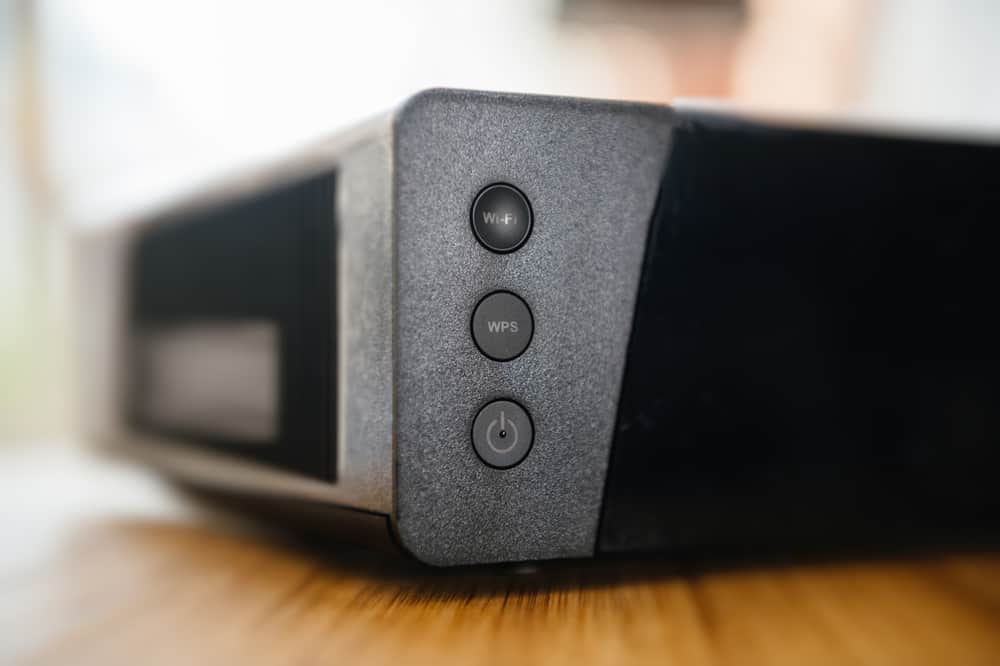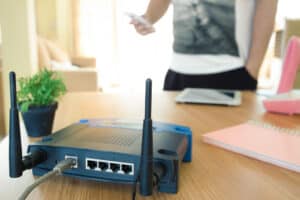
You should turn off WPS to keep your WiFi network secure. When WPS is enabled, it is easier for hackers to break into your network. WPS makes it easier for you to add devices onto your network, which means it’s also easier for others to get in, too.
We’re not all technically-inclined people. Modems and routers and connecting devices are confusing to many of us. That’s why we’re taking a minute to share some tips about WPS and how you can keep your information safe from hackers on your home WiFi network. Read on to find out why it’s so important.
What Is WPS?
Let’s start with the basics. What is WPS? It’s short for WiFi Protected Setup. It’s a feature of some routers that, when enabled, allows you to connect devices like computers, TVs, and tablets without needing a password.
Many WPS-capable routers have a button you push that makes it easy for you to connect your electronics to a wireless network. When the button is engaged, WPS is on and you can easily make your connections.
How Do You Turn WPS On or Off?
Routers and modems are all slightly different. Some don’t even have a WPS feature. If yours does, it’s likely in a push-button form. Some WPS buttons are large and easy to see with the letters WPS etched into their surfaces. Others are quite small and may even require the use of a pin or needle to press them.
Still other routers may not have a physical button though they do have the WPS feature included. These types of routers give you access to the WPS feature through the screen of a device. You’ll go to settings for your wireless network and look for WPS in the menu.
There is usually a pre-established timeframe that you have to press the button or make your selection in settings to enable WPS before the other device stops looking for the signal. It could be from two minutes to five minutes depending on your router.
WPS uses a PIN, also. Rather than devices needing the WiFi password to access the network, a PIN is established. The problem is it’s eight digits long. The router only reads half of the PIN at a time. Hackers can easily figure out a four digit PIN in a short length of time. So, they crack the first half then the second half and they’re in to your network.
Disable the WPS PIN Function
Most routers with WPS capability have an option in settings to disable the PIN feature. This is a good idea. If you at least disable the PIN, you’ll decrease the chance of a hacker attacking your WPS and successfully breaking through.
Why Should You Keep WPS Turned Off?
While it’s true that turning WPS on does make it more convenient for you and your family to connect devices to your home WiFi network, that convenience could come at a high price.
WPS makes it easier and more convenient by essentially exposing your network. It makes your network more accessible. So, sure, it’s easier for your family to access the network but it’s also easier for anyone else to access your network.
Basically, when WPS is enabled, it makes your network more vulnerable to attacks and all sorts of hacker software. You don’t want to trade in your security for convenience if you can avoid it.
Best Case Scenario for Using the WPS Feature
The best case scenario for anyone who wants to use WPS is to purchase a router that has a physical button for enabling WPS. This setup makes it so someone has to physically have access to the button to turn WPS on. It’s also great because you can enable it for short periods with a simple push of the button.
The Bottom Line
The bottom line is you’ll have to trade in security for convenience when you use WPS on your router. Get a router with a physical button and only turn WPS on when you need to connect a device. Keep it off the rest of the time.








